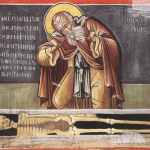It was 1989, and Dr. Petra de Jong, a Dutch pulmonologist, was asked for help by a terminally ill patient, a man in great pain with a large cancerous tumor in his trachea. He wanted to end his life.
She gave the man pentobarbital, a powerful barbiturate — but not enough. It took him nine hours to die.
“I realize now that I did things wrong,” Dr. de Jong, 58, said in an interview in her office here. “Today you can Google it, but we didn’t know.”
Her warm and sincere manner belies, or perhaps attests to, her calling. The man was the first of 16 patients whom Dr. de Jong, now the head of theeuthanasia advocacy group Right to Die-NL, has helped to achieve what she calls “a dignified death.”
Founded in 1973, Right to Die-NL has been at the forefront of the movement to make euthanasia widely available in the Netherlands, even as the practice remains highly controversial elsewhere. Polls find that an overwhelming majority of the Dutch believe euthanasia should be available to suffering patients who want it, and thousands formally request euthanasia every year.
Right to Die-NL, which claims 124,000 members, made worldwide headlines in early March with the news that it was creating mobile euthanasia teams to help patients die at home. The organization has also courted controversy with its call for legislation to make euthanasia available to anyone over age 70, sick or not.
Dr. de Jong said more than 100 requests have been made for the mobile service. Several of them are being evaluated, and euthanasia has been performed in one case.
Advocates and critics of assisted suicide are watching the organization’s efforts closely. Rick Santorum, the Republican presidential candidate from Pennsylvania, created something of a stir in February when he asserted — wrongly — that euthanasia accounted for 5 percent of all deaths in the Netherlands, and that many elderly Dutch wore wristbands that said “Do not euthanize me.” Dutch officials quickly countered the claims.
“Internationally, the Dutch have pushed the conversation on both the wisdom of allowing people to choose how and when they die when they’re in great suffering, and on the nature of compassion in dying,” said Paul Root Wolpe, director of the Center for Ethics at Emory University in Atlanta.
How does it work? The article offers this description:
Say a hypothetical 82-year-old man with metastasizing prostate cancer and poor prospects is told by his doctor that does not qualify for euthanasia. The man could contact the Right to Die-NL’s new “life-ending clinic,” and if he appeared to meet the criteria, a doctor and a nurse would go to his home to make an assessment. If all the conditions were met, he would be euthanized, ideally with his family beside him.
Dr. de Jong emphasized that a patient could never be euthanized on the initial visit, because the law requires that a second physician be consulted.
Even in the Netherlands, some think Right to Die-NL may now be going too far. In addition to the mobile teams, the organization is among those pushing to give all people 70 years old and over the right to assisted death, even when they are not suffering from terminal illness. (The conservative government of Prime Minister Mark Rutte has said there will be no changes to the law under its tenure.)
“We think old people can suffer from life,” Dr. de Jong said. “Medical technology is so advanced that people live longer and longer, and sometimes they say ‘enough is enough.’ ”












